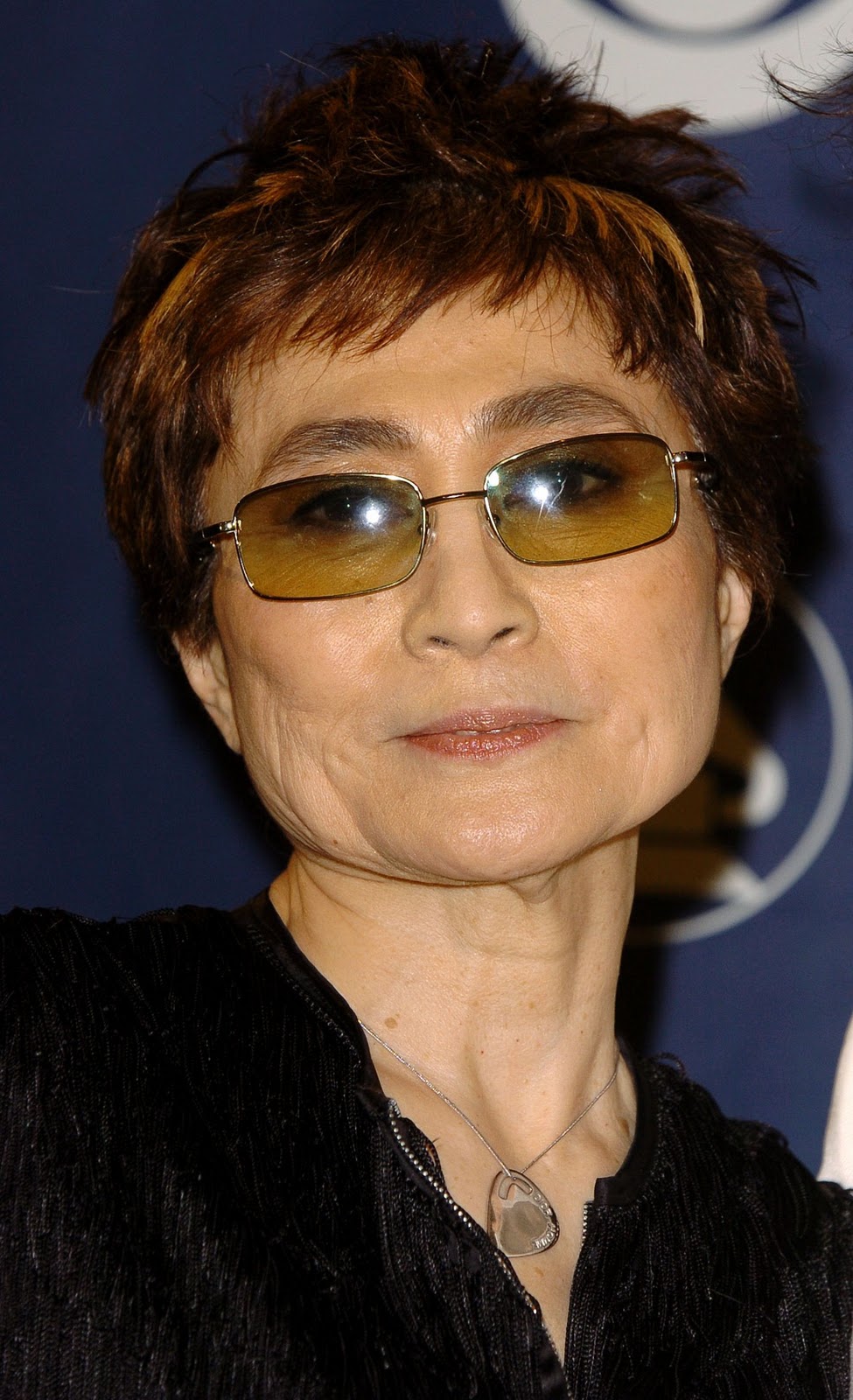Yoko Ono photos have transcended mere visual representation to become powerful symbols of peace, art, and activism. As a multifaceted artist, Ono's photography captures not just moments in time, but the essence of her philosophy and the cultural movements she has influenced. In this article, we will delve into the significance of Yoko Ono's photographic works, exploring her life, her artistic vision, and how her images continue to inspire generations.
Yoko Ono, known for her avant-garde art and her marriage to John Lennon, has always used her art to challenge societal norms and promote peace. Her photos often reflect her commitment to social justice, feminism, and the anti-war movement. This article aims to highlight the impact of her photography and the messages behind some of her most iconic images.
Join us as we journey through the world of Yoko Ono photos, examining their historical context, artistic significance, and the personal stories that accompany them. Whether you are a long-time fan of Ono’s work or a newcomer to her art, this exploration will provide a comprehensive understanding of her contributions to contemporary photography and culture.
Table of Contents
- Biography of Yoko Ono
- Early Life and Influences
- Yoko Ono's Artistic Journey
- Iconic Yoko Ono Photos
- Themes in Yoko Ono's Photography
- Legacy and Impact on Art and Activism
- Notable Exhibitions Featuring Yoko Ono Photos
- Conclusion
Biography of Yoko Ono
Yoko Ono was born on February 18, 1933, in Tokyo, Japan. She is a renowned artist, musician, and peace activist, best known for her avant-garde works and her marriage to John Lennon, one of the founding members of The Beatles. Ono's art often embodies a deep commitment to social causes and the promotion of peace, making her a significant figure in both the art world and the cultural landscape of the 20th century.
| Name | Yoko Ono |
|---|---|
| Date of Birth | February 18, 1933 |
| Place of Birth | Tokyo, Japan |
| Profession | Artist, Musician, Activist |
| Notable Works | Cut Piece, Bed-In for Peace, Grapefruit |
Early Life and Influences
Ono's early life was deeply influenced by her upbringing in a well-to-do family in Japan during World War II. The conflict and its aftermath shaped her worldview and commitment to peace. After moving to the United States in the 1950s, she became involved in the New York City avant-garde scene, where she met influential artists and musicians who would shape her career.
Influences on Her Art
Yoko Ono's art is characterized by a diverse range of influences, including:
- Japanese culture and aesthetics
- Feminism and women's rights
- Political activism and anti-war movements
- Conceptual and performance art
Yoko Ono's Artistic Journey
Ono's artistic journey began in the 1960s, where she gained recognition for her conceptual art pieces that challenged traditional notions of art. Her works often invited audience participation, breaking down the barriers between artist and viewer. This interactive approach is evident in her famous piece, "Cut Piece," where she invited spectators to cut away her clothing, provoking discussions about vulnerability and consent.
Iconic Yoko Ono Photos
Yoko Ono’s photography is an integral part of her artistic expression. Some of her most iconic photos include:
- Bed-In for Peace (1969): Captured during her honeymoon with John Lennon, this series of photographs documents their week-long protest against the Vietnam War.
- Self-Portrait (1966): A thought-provoking image that explores identity and self-perception.
- Grapefruit (1964): A collection of instructions and conceptual art pieces that challenge the boundaries of traditional art.
Themes in Yoko Ono's Photography
The themes present in Ono's photography are reflective of her broader artistic philosophy:
- Peace and Activism: Many of her photos promote messages of peace, urging viewers to engage in social and political activism.
- Feminism: Ono often explores themes of gender and identity, challenging societal norms through her imagery.
- Interactivity: Her works invite participation, emphasizing the relationship between the artist and the audience.
Legacy and Impact on Art and Activism
Yoko Ono's contributions to art and activism have left an indelible mark on contemporary culture. She has inspired countless artists and activists to use their platforms for social change. Her commitment to peace and equality continues to resonate, making her a pivotal figure in the fight for justice.
Notable Exhibitions Featuring Yoko Ono Photos
Throughout her career, Yoko Ono's work has been featured in numerous prestigious exhibitions worldwide, including:
- The Museum of Modern Art (MoMA), New York
- The Guggenheim Museum, New York
- The Art Gallery of New South Wales, Australia
Conclusion
In conclusion, Yoko Ono photos are not just artistic expressions; they are powerful narratives that advocate for peace, gender equality, and social justice. Her ability to intertwine her life experiences with her art has created a profound impact on both the art world and society as a whole. We encourage you to explore her works further and engage with the messages they convey. If you enjoyed this article, please leave a comment, share it, or explore more of our content.
Thank you for joining us on this journey through Yoko Ono's iconic photography. We hope to see you again soon as we continue to explore the world of art and activism.
John Travolta Divorce: A Deep Dive Into The Actor's Personal Life
Hezly Rivera Height: All You Need To Know About The Rising Star
Elliott Smith And Pink Carnation: A Deep Dive Into The Artist's Legacy


